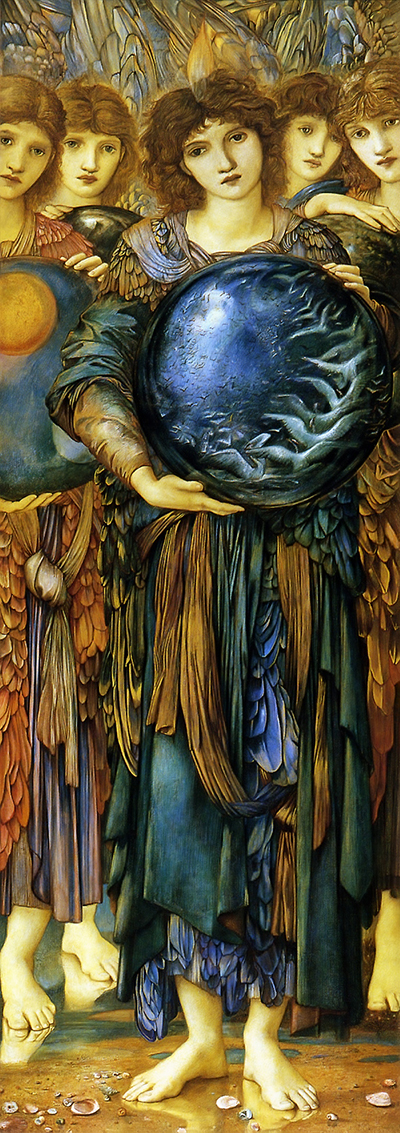Edward Burne-Jones' work, the Days of Creation is part of a collection of the artistic work he did for William Morris in 1870. The two were close friends and collaborators in the beautification of the Saint George Chapel of Saint Editha Church at Tamworth at the time.
The piece of art illustrates Edward's view of the six-day creation story, giving every angel in his drawing the chance to display every creation step in a fascinating globe. Each magical sphere tells its own story in both the terrestrial and celestial realm showing a divine elaboration of the creation story. In a comment, Mr Edward mentioned his work as a romantic dream of a place that never was, in light of a land no one really remembers; paraphrased.
Being a pre-Raphaelite designer and artist, Edward Burne-Jones collaborated with Mr Morris on many pencil drawings, watercolour paintings and cartoons for different art projects including ceramics, book illustrations, tapestry designs and glass windows. Together with Morris, they co-founded a company that dealt with the manufacturing and retailing of decorative art and furniture. The Days of Creation is one of the works that was born out of their collaboration.
This piece of work has been praised by different important commentaries such as Oscar Wilde, on a publication in a magazine by Dublin University. In his piece, Mr Wilde breaks down the Days of Creation detail by detail, showing his awe and admiration of the work. He talks about the glorious hair the angels portray and their eyes of light that to him describe wisdom and love. As the number of days of creation advances, so does the number of angels and their glory as well. The angel in charge of the seventh day is sited under the angels of creation with a golden harp, signifying the message of rest and worship of the Sabbath.
It is no doubt that Burne-Jones (1833-1898) had an artistic admiration of the days of creation as traditionally elaborated in the bible. This piece must have been his way of portraying how he sees it yet trying to bring about the awe that the heavenly creatures also had for the same. The Days of Creation took approximately six years to be completed, between 1870 and 1876. No matter how long it took, Mr Edward's work truly paid off with an excellent outcome.




